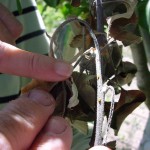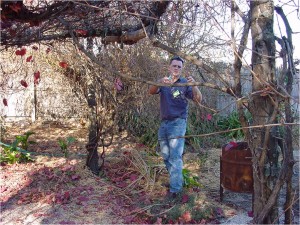Navigation
-
Recent Posts

February 11, 2014


When Rouen decided to get rid of the barberry bushes….
December 15, 2013
Archive of Posts
Biosecurity relates to the protection of plants and animals from the introduction and impact of new or re-emerging pests, diseases and weeds. Biosecurity measures are implemented to protect a country’s economy and ecosystems from the arrival and establishment of such pests. It also safeguards a country’s reputation as a clean and dependable trading partner in a global economy. The growing movement of people and goods both within a country and across borders increases the risk of introduction and potential establishment of exotic organisms into new territories.
 Biosecurity activities fall along a continuum starting from offshore activities (e.g. on-farm Biosecurity, preclearance, surveys), in-transit desinfestation, quarantine, surveillance, detection and management of incursions, to the eradication or control of established exotic or re-emerging pests. The ability to respond in an appropriate and timely manner to incursions is paramount to protect agriculture and local ecosystems. For each step in the continuum covering pre-border, border and post-border activities, roles and responsibilities fall under different agencies and require wide-ranging expertise. Biosecurity encompasses quarantine processes, plant pathology, entomology, weed biology, invasion biology, risk analysis, community engagement, emergency response planning and legislation.
Biosecurity activities fall along a continuum starting from offshore activities (e.g. on-farm Biosecurity, preclearance, surveys), in-transit desinfestation, quarantine, surveillance, detection and management of incursions, to the eradication or control of established exotic or re-emerging pests. The ability to respond in an appropriate and timely manner to incursions is paramount to protect agriculture and local ecosystems. For each step in the continuum covering pre-border, border and post-border activities, roles and responsibilities fall under different agencies and require wide-ranging expertise. Biosecurity encompasses quarantine processes, plant pathology, entomology, weed biology, invasion biology, risk analysis, community engagement, emergency response planning and legislation.
From pre-border preparedness, prevention activities, rapid emergency response to the management of established pests and their impact on production systems and trade, Biosecurity is a shared responsibility between government, industry and the community.
Managing an increasing risk

As domestic and international trade increases, so too does the risk to Australia’s economy and environment. The amount of containerised, sea cargo imports arriving in Australia has increased significantly in the last decade from under 1 Million TEUs (Twenty foot Equivalent Units) in 1996 to reach 2.7 Million TEUs in 2012. Airfreight imports and vessel visits have also increased in the last decade. Biosecurity agencies intercept and inspect sea containers and freight which may pose a high risk for significant pests and Biosecurity risk material.
It is estimated that globally, over 2,000 airlines are operating more than 23,000 aircrafts and servicing over 3,700 airports. In 2006, 28 million scheduled flights carried 2 billion passengers around the world. Over the past 30 years, the average yearly growth of world air travel has been close to 5%. This YouTube video shows the 24-hour sequence of air traffic around the world.
BSASP is valued for its services across private and government sectors and can provide professional services to assist you with Biosecurity related projects and compliance.

